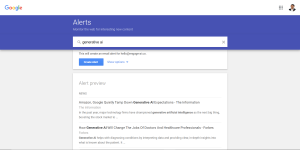How can you connect better with your audience in the B2B space?
The answer lies in storytelling.
Storytelling is the sharing of experiences through words, images and sounds. People love stories; we connect with them because they convey meaning and emotion.
Why Should Businesses in B2B Space Use Storytelling?
In the B2B space, stories have the same power. You’re communicating with your target audience in a way that is memorable and interesting. As a result, they’re more likely to remember and trust you.
Storytelling, in essence, can be a powerful tool for you to form and nurture connections as well as boost conversions.
So, are you ready to start building rapport with your prospects?
Then let’s get relatable.
Why Do B2B Businesses Need Storytelling?
If you’re in the B2B business, honing your storytelling skills can lead to higher conversion rates, engagement and credibility. This is especially true if your primary lead generation channel is LinkedIn.
Here are key reasons why you need to use storytelling to grow your brand:
Technical and Complicated Services
B2B services tend to require in-depth explanations, and storytelling can help simplify complicated ideas or services.
For instance, if you own a business consulting firm, storytelling can help you explain the value of your services in a more concise and impactful way.
Instead of focusing on business frameworks, processes or concepts, you could share stories demonstrating how different organisations improved their businesses using your consulting service.
Long Sales Cycle
In the B2B space, your average sale takes longer to close. This is often due to the complex nature of purchasing decisions in this sector.
Storytelling can help shorten this cycle by helping you get closer to prospects faster.
For instance, if you’re selling marketing technology, stories can better convey how these platforms create positive business outcomes.
As prospects get to know you better, they’re more likely to trust your capability. And of course, trust is the key ingredient that leads to more sales.
Low Conversion Rates
You may have noticed that it’s getting harder to convert leads into customers. This is because the competition is also improving their game.
Today, savvy marketers are upping their game by incorporating storytelling into email drip campaigns and website content. This way, they’re able to grab attention at scale.
Tell a compelling story about your product or service and increase your chances of getting your prospects to engage.
Now that you’re aware of how storytelling can bolster your business let’s look at some effective storytelling techniques that you can quickly adapt to bring in those clients.
Storytelling Frameworks for Businesses in B2B Space
You may use these two storytelling frameworks to structure your content marketing campaigns:
The Hero’s Journey
By knowing the type of people most likely to buy your product, you can craft stories targeted at them specifically.
Here’s how you can craft a highly converting story with a hero’s journey plot:
-
Step 1
Choose a specific customer profile that you want to appeal to with your story. The key is to celebrate your prospect by highlighting how they can overcome their pain points and scale their business.
-
Step 2
Create a story arc. Start by introducing the hero (your prospect). Once you have a context to your story, foster interest and suspense by talking about your prospects' challenges. Finally, there should be an ending where your client overcomes all odds to achieve their goal using your solution.
-
Step 3
Make sure to have a call to action at the end. Bring prospects to the next step of the funnel. For instance, if you're selling a SaaS solution, it could be to create a free trial account.
The “What If” Technique
This technique triggers the imagination of your prospects. It helps them paint a comprehensive picture of a reality where they’ve achieved their goals because of your solution.
Here’s how it works:
-
Step 1
Think of a challenge that your prospects might be facing at present. Does your brand have a unique solution to it?
-
Step 2
Present a future scenario where your prospects are no longer affected by the pain point after implementing your solution.
-
Step 3
Make sure to emphasise the benefits of using your solution rather than the features of your services.
-
Step 4
And just like the first technique, remember to include a call to action!
With these two storytelling processes, you’ll be able to make a strong connection with your prospects.
Tips on How to Tell a Better Story
Here are our tips on writing the right story for your brand:
- Narrow down the hero or protagonist in your story.
- Make sure your story fits with your brand identity and tone of voice.
- Be authentic and honest about your brand in the storytelling process.
- Use simple language where possible to entice readers with clarity of message.
- Keep your story short but sweet with no clutter or fluff.
- Pace your story. Don't clump everything together into a massive block of text.
- Use strong, emotional words where possible to take your audience on an emotional journey.
Bottom Line
Storytelling techniques work well with B2B brands because they focus on building a relationship with prospects rather than selling to them.
By creating the right story, you can convince your prospects of a future without their current pain points, thanks to your solution.
Add these storytelling techniques into your content marketing plan and watch how they boost your sales and revenue, especially when you have a content distribution boosting strategy for LinkedIn.








